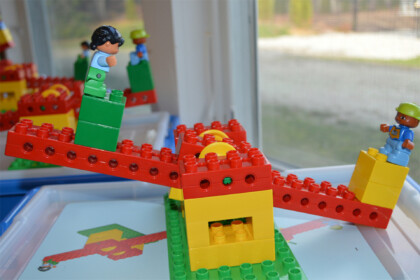
Projects & Materials

Machines in Our World

The children finished building their seesaw in ten minutes flat, and right away they began experimenting with force and balance.
We watched as one first-grader put a small figure on each end of his seesaw. It didn't balance. "Let's move this one," said his partner, a third-grader, pushing the figure towards the middle then letting go very slowly. As the two played with their creation for the next ten minutes, they were each exploring motion and force in different ways.
Their seesaw was just one of eight different hands-on design projects they'll do this year in "Machines in Our World," a multi-age enrichment program underway at the Marguerite E. Small Elementary School in South Yarmouth.
There, teachers Mary Oldach and Adrian Bogle are relying on the kits for appropriate activities so they can focus on another STEM goal: shaping good collaborative engineering behaviors in their multi-age enrichment program.
Another thing we like about this activity from the STEM point of view is the way the larger Duplo blocks get children to the "how does this work?" stage so quickly. Working with fewer and larger pieces means projects are less about fine motor work and more about tinkering and testing things—like seesaws and spinning tops—once they're built.
The teachers used a Cape Cod Regional STEM Network mini-grant to buy nine kits for the school, so they can have as many as 18 students working in pairs. They are creating portfolios to track student learning and taking photos and videos to highlight exploration and cooperation along the way.